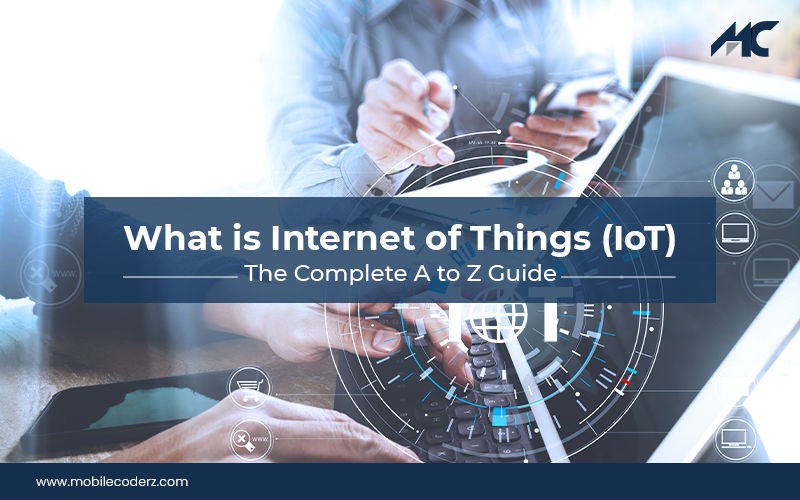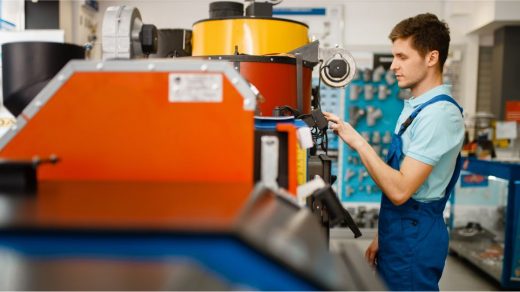Active IoT users include those who own an Amazon Echo or Arlo security camera, as well as a Nest Learning Thermostat. This concept has been around many years, but we don’t see ourselves as IoT users.

Instead, we simply think of them as smart gadgets and enjoy their ability to automate our lives. But the concept still needs to be explored in greater depth. This includes what an IoT device is, how they communicate with each other, and how many are there in the world. Let’s dig into it.
IoT Overview
IoT, which stands for Internet of Things, refers to a connected system of physical devices capable of exchanging data. It is now possible to link physical objects and computing devices. IoT, although it’s a new technology, is expected to make our lives easier.
IoT: Why is it important?
With the Internet of Things, people can live and function more efficiently, and it gives them full control of their lives. IoT is crucial for business, and smart devices can automate your home. Business organizations can track how their systems work through IoT. This includes details into everything, from supply chain to the logistics operations.
Automation is possible with IoT, which allows companies to decrease labor costs. It cuts down on waste and improves delivery of services, making it more affordable to manufacture and deliver products, and also allowing transparency into customer transactions. Businesses will soon realize its potential and use it to stay competitive.
IoT: How does it work?
Internet of Things (IoT), in essence, is a network of physical devices connecting to the internet. IoT devices all have sensors. These sensors are connected to processors which use the machine learning data. IoT plays a significant role in smartphones as the majority of consumer IoT devices are controlled by smartphones. Connectivity is another important aspect of IoT. The devices/sensors can be connected to the cloud using a variety of methods, such as Bluetooth and WiFi, cellular, satellite, etc. IoT sensors send data to the cloud, which then processes it.
The cloud will process the data, and the action you want is taken. You could check the weather or other information. Once the data has been processed, it is time for the alert to reach the user via SMS, email, or voice response There are many options available depending on the interface and the device. The device and the connection may determine whether a user can control and perform certain actions.
How does IoT Benefit Organizations?
Many benefits are available to companies through the internet of things. Some benefits are specific to an industry while others can be applied across industries. IoT’s common benefits allow businesses to:
- Monitor their overall business processes
- Enhance the customer experience (CX)
- Increase employee productivity
- Business models can be adapted and integrated
- Better business decisions
- More revenue
IoT helps companies rethink how they approach their business and gives them tools to improve their business strategies. IoT is a common technology used in most industries. It can be found in transportation, manufacturing & utility businesses. But, IoT also has applications for the agriculture, infrastructure, home automation and construction industries. Some organizations are moving towards digital transformation.
IoT can make agriculture easier for farmers. Sensors can monitor rainfall, humidity, temperature, soil content and other variables that could help to automate farming techniques.
IoT also helps with monitoring operations around infrastructure. IoT sensors can be used to monitor changes and events in infrastructure such as bridges, buildings, and structural structures. This can lead to cost savings, reduced time, improved quality-of-life workflow, and paperless workflow.
IoT is a way for a home automation business to monitor and manage electrical and mechanical systems in a building. Smart cities, on a larger scale, can reduce waste and energy consumption. IoT impacts every industry, including healthcare, finance & manufacturing.
IoT Technology
IoT developers in India are an area where businesses must make substantial investments. Here are the top IoT technology that can help with IoT application development.
IoT Analytics
Many business models need newer algorithms and analytics tools because the demand for IoT and data will rise significantly in the next few years. This will require advanced structures for analytics, architectures, and ML. IoT businesses can protect their networks using distributed analytics technology.
IoT Security
More responsibility comes with large amounts of data. IoT devices, software, and hardware will need to be protected from hacks, physical damage, tampering, or other forms of attack. IoT security poses a problem because many devices or things that enable IoT use simple OSes and processors. They may not support more advanced security software.
Low-Power Wide Networks
Modern cellular networks do not provide the correct mix of technical features and operational cost that is required for IoT applications. These applications require broad coverage and low costs of hardware and operations. These IoT applications will likely be dominated in the future by new solutions such as narrowband IoT.
Low-Power Short IoT Networks
Through 2025, wireless IoT connectivity will be dominated by short-range & low-power networks. These networks far outnumber those that use long-range IoT networks. Multiple results will exist, and there will not be a single winner due to trade-offs between technical and commercial interests.
Event Stream Processing
IoT application development will produce high data rates in the near future that should be analyzed in a real-time manner. While some IoT development systems can create 10 000 events per second, this is not possible for most applications. This problem is mainly limited to the telecom sector. DSCPs (Distributed Stream Computing Platforms), can be used to address such requirements. These platforms can process extremely high-rate data streams, and perform real-time analysis making it paramount.
IoT Operating Systems
Because of the complexity and cost-efficiency of large-scale operating platforms like Windows and Mac OS X, small operations systems will soon be popular. They require additional resources to run all the major IoT applications. IoT operating systems that are smaller can be used for event-driven tasks. This allows businesses to benefit from IoT without the need to invest extra resources and money in developing IoT apps on a more complex OS.
The Future of IoT
As communications and sensors become cheaper, it is more affordable to add IoT devices even though there may be no obvious benefits to consumers. Although deployments are currently in the early stages, most companies engaging with IoT are still at the trial stage. This is due to the fact that technology such as 5G, machine-learning powered analytic and sensor technology are still in a relatively early stage.
There are many competitors and different standards, and many vendors, from software companies to device manufacturers to network operators, want their share of the pie. We don’t yet know who will prevail. However, without security standards and security being an ongoing problem, IoT security issues will continue to grow.
As more connected devices become available, our homes and workplaces will be filled with smart products. However, we must accept privacy and security compromises.
Author’s Bio
Erma Winter is an expert app developer at MobileCoderz, Top Mobile App Development Company in the USA.With 9 years of professional expertise, She has worked with rising startups and big enterprises. Aside from the profession, she loves to watch mystery movies and write romantic poems.



Recent Comments